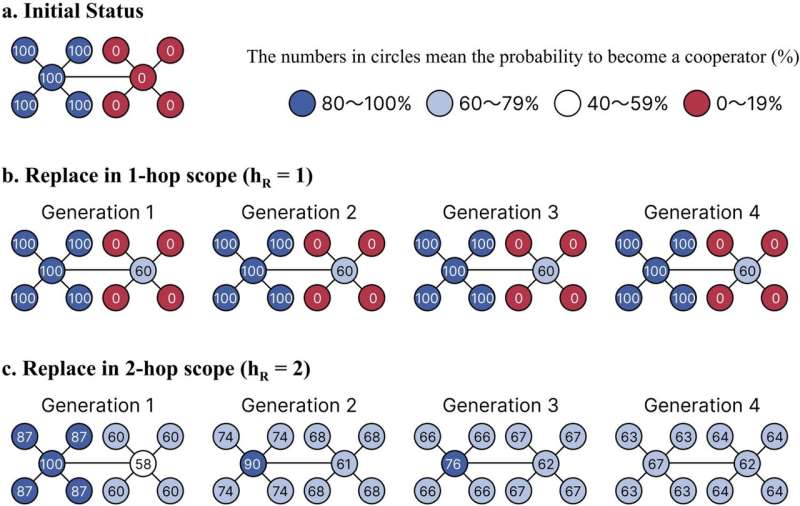Evolution of cooperation in multiplex networks through asymmetry between interaction and replacement

Cooperation is one of the elements that form the foundation of social systems; nonetheless, the intricacies of its evolutionary mechanisms are not fully understood. Recently, "multiplex networks" have garnered attention as a model that represents the characteristics of human social interactions.
Prior research has reported that cooperative behavior is enhanced when the dual processes essential for its evolution—competition (interaction) and learning (strategy replacement)—occur with the same partner. In other words, a symmetrical relationship between interaction and strategy replacement tends to promote cooperative behavior.
In a by researchers from the Graduate School of Systems and Information Engineering at the University of Tsukuba, the dissemination of cooperative behavior within a group using multiplex networks was analyzed. Using multiagent simulations, they explored various scenarios that specifically targeted the symmetry or asymmetry in the scope of partner selection for interaction and strategy replacement.
The findings, published in Scientific Reports, revealed that contrary to established views, asymmetries can facilitate the evolution of cooperative behavior in certain instances.
These insights suggest that utilizing an asymmetric approach—in which competition and learning occur with different partners—could prove effective in catalyzing cooperative behavior within a social group. This study is expected to enrich future research on the evolution of cooperation by offering intersections with research in diverse fields of social sciences, including anthropology, economics, and social psychology.
More information: Masaaki Inaba et al, Evolution of cooperation in multiplex networks through asymmetry between interaction and replacement, Scientific Reports (2023).
Journal information: Scientific Reports
Provided by University of Tsukuba





















